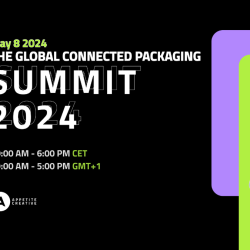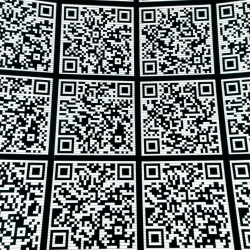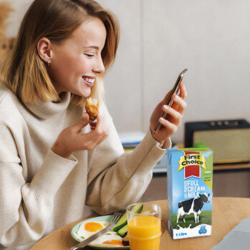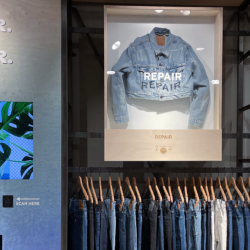With the removal of third-party data by Google expected between July and December 2024, having access to alternative methods to source, find and target customers, has become invaluable for businesses. Step in QR codes, delivered via connected packaging. A left-field suggestion, you might say, but in fact for businesses wanting to keep close to customers, understand them and find new ones, you couldn’t find a better source of data following the demise of the humble third-party cookie.
First-party data
As soon a QR code is released, feedback from customers will be instantaneous and continuous. While collecting this data in real time, brands can see exactly what content customers are interacting with, and adapt or update it as required. Often connected packaging experiences, typically accessed via QR codes found on the packaging, have iterative improvements added over the course of a year. It can evolve and deliver new data in real-time. The different layers of data connected packaging can deliver, from age, gender, and location to product preferences, can help brands build a unique and in-depth picture of consumer behaviours. This insight can be invaluable, assisting brands to better understand their target audiences, but also reach them more efficiently, building engagement. A recent survey we carried out showed that increased investment in digital marketing spend is planned in 2023, by 88% of those surveyed versus 59% in 2022. The results showed that it is perceived by almost half (44%) to be becoming the main route to communicate directly with customers.
Don’t just take our word for it, look at what some of the biggest brands are already doing: in the last 18 months the New York headquartered company (behind household names like Pepsi, Gatorade and Frito-Lay) has increased its global first-party data records by 50%, by accruing people’s email addresses in exchange for reward programs. Letting it serve people more relevant messages, ultimately driving revenue. PepsiCo has used several tactics to capture consented first-party data, including QR codes available on product packaging, in-store point of sale at registers and TVC ads.
Education and brand awareness
Connected packaging creates experiences that educate customers about the brand and the products, which results in a brand awareness boost. For example, a recent campaign we worked on with food packaging company Tetra Pak, utilised QR codes on the packaging to an eco-themed mobile quiz to educate customers about Tetra Pak’s environmental impact and its sustainability work.
Not only did customers better understand Tetra Pak’s approach to sustainability and the environment, but the campaign allowed the company to collect customer data, including the location of QR codes scanned, time, day, flavour, size of the package purchased, even the store itself. Additionally, they were able to link together data and understand which customers are more recycling conscious, and which regions of a specific country are more educated around sustainability.
Customer loyalty
Loyalty programmes are a huge advantage offered by connected packaging. Household names like Pepsi, Gatorade and Frito-Lay have increased global first-party data records by 50% by accruing people’s email addresses in exchange for reward programs. We’re seeing more requests than ever for loyalty and rewards programmes, which connected experiences are perfectly placed to deliver. Especially important, when inflation means loyalty is a bigger challenge for brands than usual. In fact, we’ve recently seen a programme yield a 28% increase in sales within six months of implementation.
Tracking, traceability, and anti-counterfeiting
By scanning a product trust is developed. Secure QR codes have been created to track products, their use, and offer solutions for anti-counterfeiting. The most common use today with QR codes is a serialised QR code. This is when every product or item has a unique QR code (known as a digital identity) to curb counterfeit products.
Regulation
There are several regulations for digital product passports across the EU, which will require every industry to have a digital identity. This will typically be the QR code. Initially, it will be for batteries and wine, but other industries won’t be far behind requiring digital identities. Some of this regulation started last year.
Sharing key information will also be enforced such as explaining ways to recycle packaging. Manufacturers are increasingly seeing the value of adopting digital tracking solutions via QR codes before regulations come into force, especially as they unlock a raft of other opportunities too. Consumers now see QR codes as a normal way to access branded content, games and experiences — and they’re happy to share their personal data in exchange for this value add. Combined with the rise of connected packaging experiences, brands are increasing their investment in this supercharged media channel like never before, and the results are impressive.
Don’t mourn the death of the third-party cookie, instead tap into connected packaging for improved data and business growth.
Featured image: Julissa Capdevilla / Unsplash































